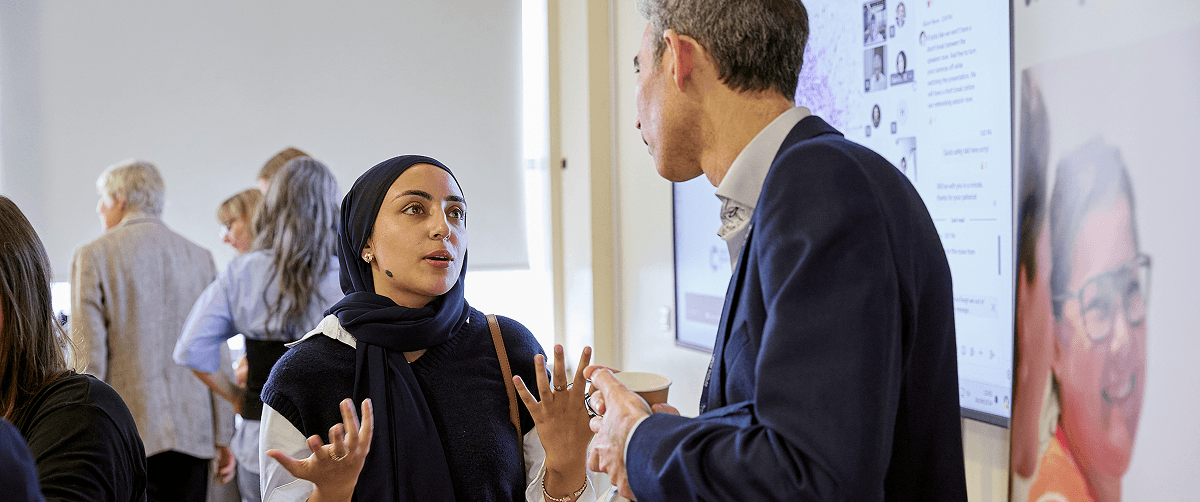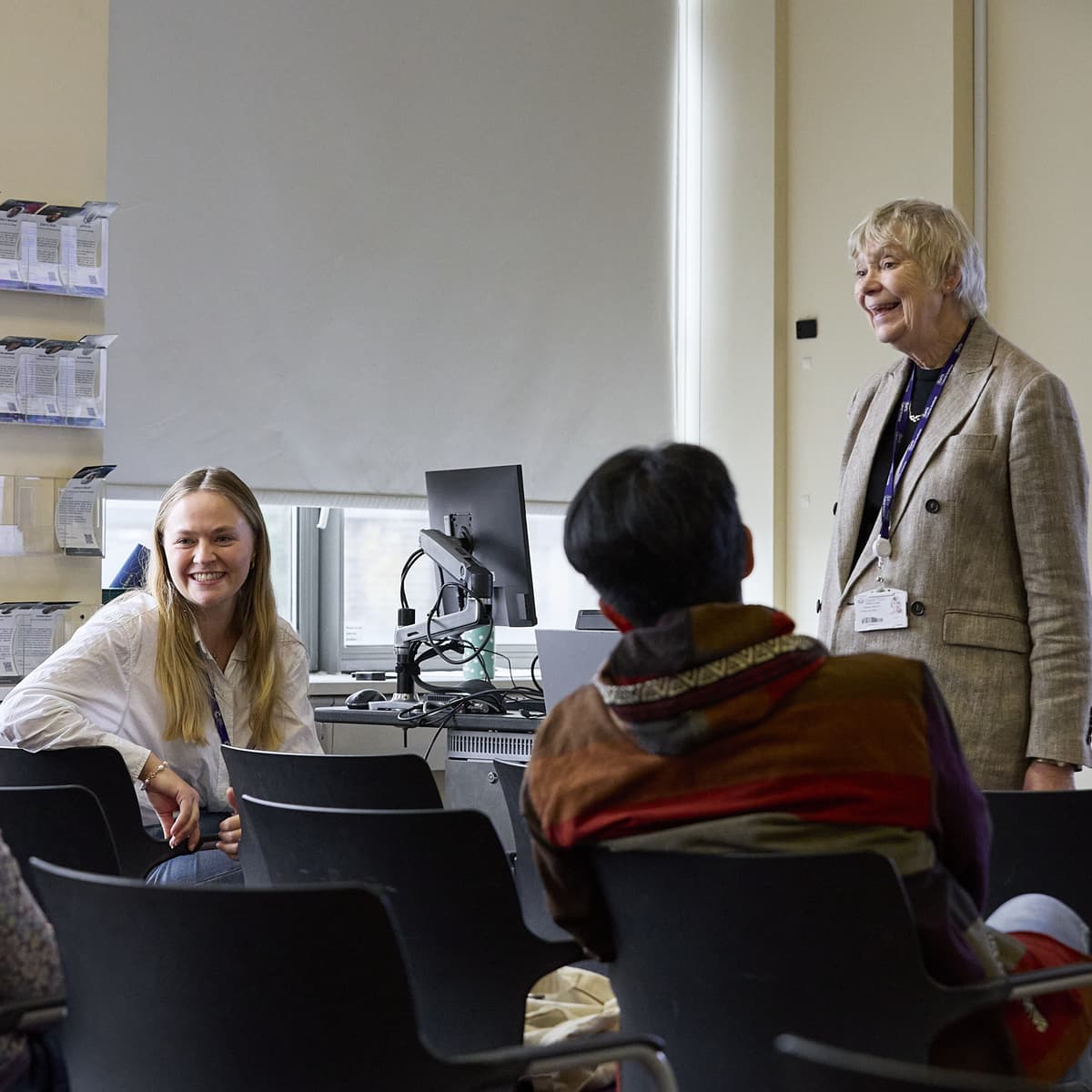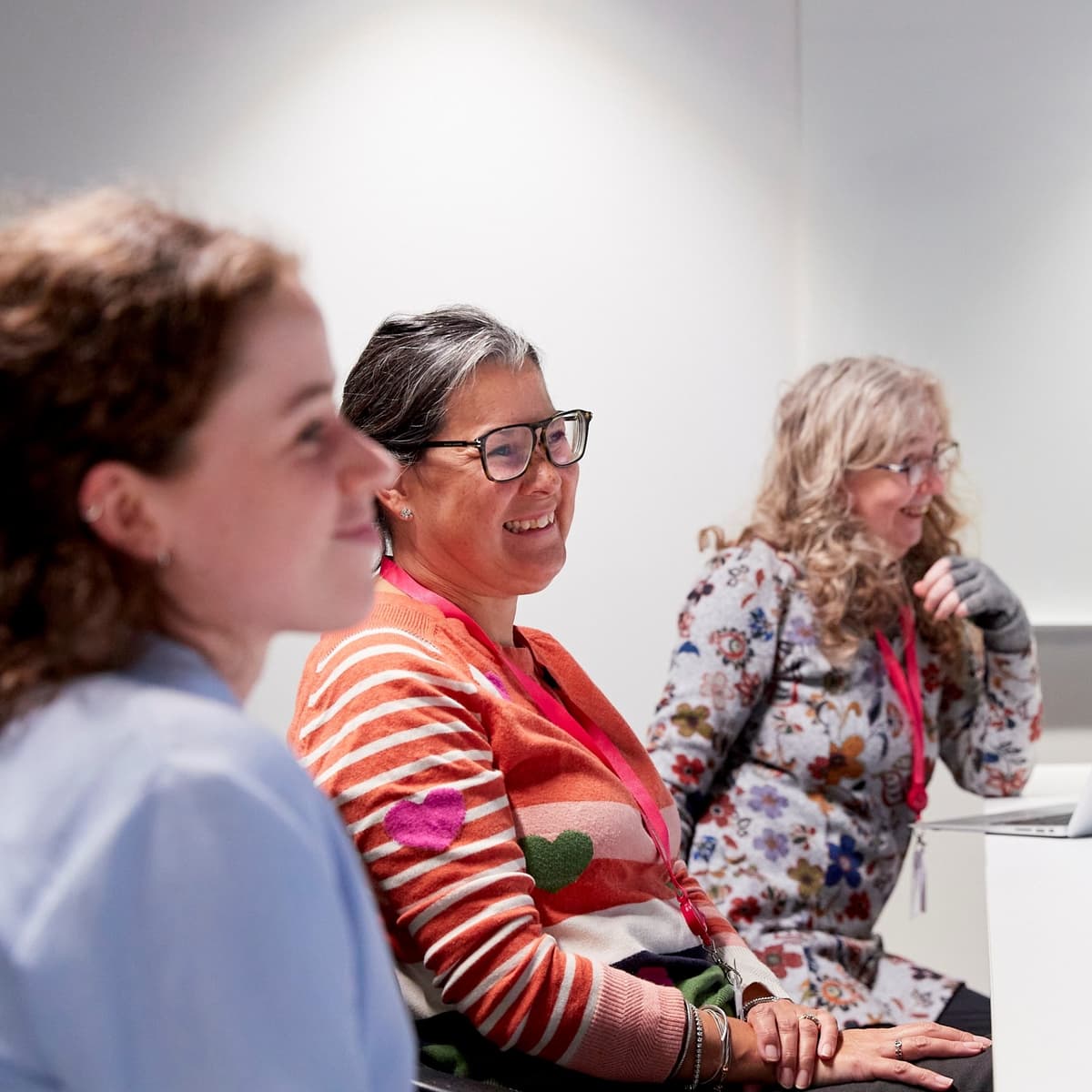
There are several methods you can use to involve people affected by cancer and members of the public in shaping your work. The right method for you depends on factors like how much influence you want them to have, if you want qualitative or quantitative insights, how much time and capacity you have, your target audience and budget.
Explore budgeting for your activityA well-designed survey or questionnaire will allow you to collect insights from lots of people. Surveys are great for when you’re exploring topics that aren’t overly complicated or don't require a lot of explanation for people to contribute. Avoid surveys if you want to explore sensitive issues associated with someone’s cancer experience.
A good introduction can help increase the completion rate. Your introduction should help build trust and ensure only relevant respondents complete the survey.
The introduction should include a brief summary of your research (in simple language for a lay audience), the aim of the survey, how you’ll use the response and why patient and public insight is important to your research. Include how long the survey is and if responses will be anonymous and confidential. Your introduction should end with a thank you for getting involved.
If you plan on asking sensitive or personal questions, mention this at the start and explain how responses will help you. This will help people prepare to share or opt out if they don’t want to.
You should clearly state where and how personal data will be stored and used. For example, you could add a statement at the start about the General Data Protection Regulation (GDPR) or a link to your institution's privacy policy.
Longer surveys can result in lower completion rates and lower quality data. Keep respondents engaged by taking out any unnecessary questions and keeping your survey to a maximum of 15 questions. Use open-ended questions wisely, as they will take respondents longer to respond to and take you longer to analyse.
Having a cluttered and text heavy survey may overwhelm respondents, so they might not complete it. Be sure to check spelling, grammar, punctuation and readability. This will reassure respondents that the survey is credible.
Consider including a progress bar, so respondents can see how many questions are left.
Be clear about your timeframes and how much data you need so you know when to end your survey. For example, you may want to end the survey on 1 January or when you get 25 responses – whichever comes first.
We usually recommend keeping surveys open for at least a month.
Consider whether respondents will have the option to remain anonymous. Anonymity can help people feel more comfortable sharing their views and opinions. If you’d like to capture respondents' contact details, you should ask for them at the end of your survey. It’s particularly useful to capture contact details if you’d like to involve respondents in other stages of your research.
You should clearly state where and how personal data will be stored and used. For example, you could add a statement at the start about General Data Protection Regulation (GDPR) [EU] or a link to your institution's privacy policy.
You’ll need to ensure you’re compliant with GDPR in the collection, storing, sharing and disposal of information collected.
Learn about data protection regulations
You can also involve people affected by cancer and members of the public to help you write your survey. This is a great technique if you’re aiming to reach a wider group of people.
This will help ensure your survey is easy to understand and that you’re asking questions people can answer and that are important to them.
Interviews can help build rapport and gather rich information. They allow you to explore people’s experiences, perspectives and feelings in greater depth than other methods.
Interviews can be face to face, over the phone or online. Interviews can be structured - asking each patient the same questions in the same way, semi-structured - where the interviewer has a list of question or prompts but can ask different questions depending on responses, or unstructured - more like a guided conversation and can vary from person to person.
Interviews should last no more than two hours, covering three to four core topics but leaving enough time for people to answer fully. You should also prepare some probing questions to help delve deeper into their answers.
Expenses (if face to face) and payment should be provided.
We recommend developing a script for any interview type. This can help you feel and look prepared, ensure your questions are related to your aims and objectives and make sure you provide enough information and support to each person you’re interviewing.
How detailed your script is will depend on the type of interview you’ve chosen but you can use this general format to structure it:
welcome and introductions (put the person at ease and make them feel valued)
how the interview is structured
brief overview of your research (using simple language so they can understand)
why you are involving people affected by cancer and members of the public, and how you will use their insights
any questions before you start the interview
interview questions
next steps and when can they expect an update on how you used their responses
Having your interview face-to-face is a great way to build rapport and non-verbal cues can help with facilitating the discussion. If you hold an interview in person, you can go to people or choose a venue that they can easily get to. Be sure to consider what costs you’ll need to cover.
If the interview is over the phone we recommend that you call people directly to reduce their costs. It can also be daunting being interviewed over the phone, so you will need to try to put them at ease and build rapport. Online conversations can help you do this and find a middle ground that works for everyone.
When planning for interviews, make sure to ask about any accessibility issues you will need to accommodate.
Thanking people after they’ve gotten involved is essential. Send them a short email to thank them for their time and contributions and offer them payment (honorarium) as agreed at the beginning.
Make sure to communicate again with them later on to share an update on your research and communicate the impact their involvement has had.
Focus groups bring people together to take part in facilitated discussions on a topic. They are great when you want to explore more complicated or sensitive topics.
Being in a group together can encourage people to share views, bounce ideas off each other and engage in constructive debate. This can uncover perspectives and ideas that may not surface by speaking with people individually.
Focus groups generally last between two hours and half a day. They usually involve between 6-12 people. If you need to collect insights from more people, you can hold multiple focus groups.
Expenses (if face to face) and payment should be provided. When planning for interviews, make sure to ask about any accessibility issues you will need to accommodate.
Everyone in the focus group will get the most from it if you thoroughly plan and prepare. To do this, we recommend developing a detailed session plan. This will help ensure your questions and activities link to your involvement aims and objectives. It will also help to make sure you cover everything you need to on the day.
You should plan to focus on roughly one main topic to explore per hour and allow enough time for everyone to answer fully, ask questions and take breaks.
You should use a variety of activities and discussion techniques to keep people engaged. You can use the general format below to structure your session plan:
welcome and introductions (put the attendees at ease and set expectations for the day)
icebreaker (between 15-30 minutes)
brief overview of your research
explain why you’re involving people affected by cancer and members of the public, and how you’ll use their insights
series of activities and group discussions to gather insights
next steps and when can they expect an update on how you used their responses
For focus groups, we recommend choosing a venue that allows cabaret style seating. It should have enough room for attendees to move around for activities and space for food and beverages.
Check your venue is close to public transport options and has accessible access. You should consult with the people you invite to find out any accessibility issues you will need to accommodate.
Make sure you and your colleagues are clear about how the focus group will run and everyone’s roles and responsibilities.
We recommend nominating one key facilitator to manage the overall focus group. They will be responsible for keeping the whole group to time, making sure groups move between activities on time, and ensure everyone sticks to the agreed ways of working.
Then have a facilitator on each table to help manage small group discussions. These facilitators can take notes, or you can assign additional scribes to each table.
Appointing PPI representatives is a great way to get ongoing feedback and benefit from people’s expertise longer term. This can apply to a range of involvement activities including any strategy, steering or governance groups, workshops, roundtable events, etc.
Over time you’ll build relationships and a strong understanding of people's views and experiences. The people you involve in one project may also spark ideas for future research.
You should always involve least two PPI representatives to benefit from a range of perspectives and as it will provide peer support.
PPI representatives should be given relevant training, an induction to their role, and ongoing support. Payment for expenses and honorarium payment should be offered.
The role of PPI representatives will vary depending on the role and purpose of the activity or group. Responsibilities often include things like attending steering group meetings, contributing constructively to discussions, providing opinions, giving advice and feedback and contributing to decision-making and strategic direction.
PPI representatives help make sure that discussions consider their perspective, needs and wants. They'll help you to make sure that the views of people affected by cancer and public benefits are central to everything you do.
You’ll need a role profile to recruit for PPI representatives to make sure you're both clear on their role and expectations. It will also help you communicate key information like what the time commitment is, what skills and experiences you’re looking for and what support they can expect from you. If you already work with PPI representatives, you can work with them to write and refine the role profile.
No two experiences are the same, so advisory panels made up of people affected by cancer and members of the public allow them to discuss a much wider range of views in more depth and provide you with more robust feedback.
Your panel should be a group of between 6-14 people who can provide their feedback and perspectives over a longer period.
Advisory panel members will receive training and an induction. Expenses and an honorarium payment are paid to them.
It’s important that the work of the advisory panel doesn’t operate in isolation to the wider project. We recommend inviting someone from the patient panel (this could be the Chair if you have one) to attend other key meetings, like your research steering group, as a PPI representative.
This will help ensure there’s a connection between the two groups, so that the views of people affected by cancer and members of the public are represented in wider discussions and information from these meetings can be fed back to the advisory panel.
The role of your advisory panel will vary depending on your work and involvement needs. Responsibilities are similar to that of patient representatives, including attending meetings, contributing constructively to discussions, providing opinions, advice and feedback and contributing to decision making and strategic direction where relevant. They can also help identify opportunities for wider PPI activities and help deliver them.
Both advisory panels and patient representatives should objectively represent the wider views of people affected by cancer and members of the general public, and consider the views and experience of other people.
You’ll need a role profile to recruit for advisory panel members to clearly communicate their role, expectations, key information like what the time commitment is, what skills and experiences you’re looking for and what support they can expect from you. If you already work with PPI representatives, they can help you write and refine the role profile.

How you recruit and induct the people you involve will depend on the goals of your activity and the involvement methods you choose.

Writing in plain English or ‘lay’ can help your audience, people affected by cancer, members of the public, or professionals, understand your message exactly as you meant it.

We’ve put together advice, useful templates and case studies to help you when planning, delivering and evaluating your PPI activities.